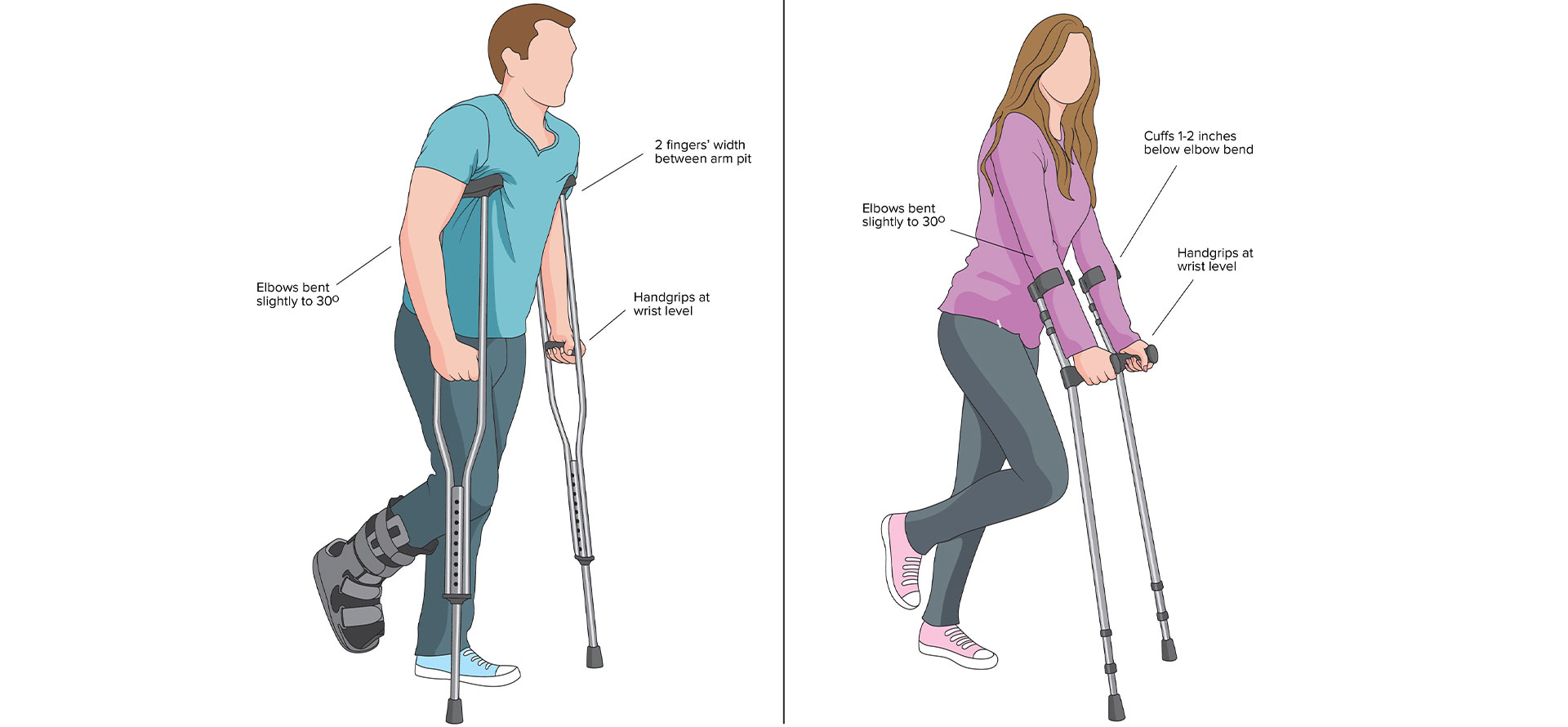Crutches are something that nobody wants to use ever, but if a situation forces someone to use they have to use them properly and carry them. Crutches are medical devices needed if someone has a leg problem or has just had surgery on a leg.
Misusing a crutch can worsen the injury because there will be chances of falling while walking, or cramps in some body regions can also occur. So, one using crutches should consult with the technician to understand how to move, walk and correctly handle the crutches.
Let’s continue reading this article to find some proper ways to handle crutches; even if using temporary crutches hire Adelaide.
Table of Contents
Who Needs Crutches?
Not everybody with a problematic leg needs to use crutches. If you need to use it while recovering from an injury, your healthcare professional will advise you to do so. It will allow you to walk or stand without putting much weight on the injured leg.
People who had a bone injury from strains or fractured their leg in some accident may need crutches for a speedy recovery. Even for ligament or tendon injuries or in the recovery process of surgery, crutches can be needed.
What Kind of Crutches is Available in the Market?
Crutches offered by companies like Respirico have different types according to the convenience of the person using them. These are-
- Underarm Axillary Crutches: These are the most common type of crutches advised by multiple medical professionals. It has a straight frame and padding on the top that perfectly fits the armpit for good balance.
- Forearm or Elbow Crutches: These are shorter in length than regular underarm crutches. It also comes with a handgrip, but here the speciality is it has a cuff that fits nicely around your upper arm above the elbow.
- Gutter Crutches: This type of crutch has a padded pocket within which the forearm stays supported by a handgrip at the front. This is rare.
How Much Weight Can Crutches Handle?
In the recovery phase, you must emphasise putting moderately less weight on your injured leg. Your doctor will decide how much weight you can put on that injured leg while standing or moving. Sometimes few cases are so severe that surgeons suggest not putting any weight on the recovering leg. In those cases, driving, standing, or walking solely depends on the pair of crutches.
In a few cases, the doctor allows them to slightly touch the toe on the ground to maintain basic balance; hence, crutches become the medium for moving around. But for mild to moderate injury, doctors generally advise putting a certain percentage of weight on their legs, and the rest can be put on crutches while walking or even standing.
This can help you understand how much stress your recovering leg can bear. But in this case, pushing your limits can be bad. For mild injuries, crutches are advised to use to maintain the balance you may nominally lack. In simpler words, the weight factor is related to the severity of the injury or surgery.
How To Make Crutches Comfortable?
Generally, the crutches available in the market are adjustable. They are only sometimes customised based on height. Instead, they develop a sliding mechanism that allows the user to adjust it as per requirement. Medical professionals often guide patients with this.
Additionally, the top portion of your underarm crutches must be a few inches lower than your armpit to fit well. The handgrip should be somewhere around the hip so that it becomes easier and more comfortable to move, depending on it.
Make sure the padding of your underarm crutch is comfortable enough, it has rubber layering on the bottom to ensure grip, and the handgrip is comfortable with you. Instead, try to put the maximum weight possible on the handgrip. These can help your recovery days go more comfortably than expected.
How To Stand With Crutches?
The best way to stand stably with a crutch is to not lean on the armpit support. This is one of the reasons people lose balance and fall while standing on crutches.
Try putting more weight on the handgrip, which is much more comfortable. Putting so much weight on shoulders might be tiring and can cause fatigued shoulders, or nerves can also get affected.
How To Walk Comfortably With Crutches?
Walking safely with crutches is the most crucial criterion because if you fall again with it, your injury can turn worse. Check whether you are adequately balanced with your crutches while you start walking.
Apply pressure evenly on both handgrips to ensure balance, move both the crutches and the recovering leg forward, and move the next leg. Repeat it carefully, and you will be good to go. But if you have only one crutch, place it on the opposite side of your recovering leg to support your weight.
How to Sit Down From Standing?
To sit comfortably, firstly, you need to push your body weight backwards, touching the seat, then balance the body weight so that the crutches can be removed. Hold the crutch with one hand and use the other to support yourself on the seat. Maintain the balance, and you are all set to take some rest.
How to Stand Up From Sitting?
The best way to do it is to hurry forward so that your back portion is still touching the seat. Then putting both crutches opposite to the recovering leg and gripping one hand on it and the other one on the seat can make you stand up more comfortably in a balanced way. Make sure you maintain the balance while moving the body weight away from the seat towards the crutch.
How to Climb Stairs With Crutches?
Climbing stairs with crutches is way more complex than just walking. Here you have to maintain balance by having grips on the handgrips of the crutch as well as the handrail of the stairs.
Firstly, you must stand a shoe length away from the bottom step and hold the hand grip, putting some pressure on the strong leg. Tuck the crutches on the armpit, move your strong leg, and lift the recovering leg. In this way, you can climb stairs safely.
Bottom Line
Moving with the help of scratch is not a very pleasant phase of life, but you need to do it properly as a part of the recovery phase. Professionals from Respirico can guide you in choosing the right scratch for your recovery and handling it.











